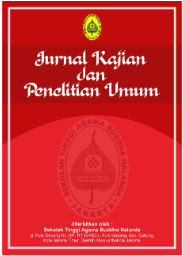Analisis Tokoh Utama Dalam Naskah Randai Santan Batapi Sanggar Bungo Satangkai
DOI:
https://doi.org/10.47861/jkpu-nalanda.v2i4.1243Keywords:
Analysis, Main characters, Randai scriptAbstract
This research aims to reveal and describe the system and way of action and reaction of the main characters in the Randai Santan Batapi Sanggar Bungo Satangkai Manuscript. The type of research in this study is qualitative research with a descriptive analysis approach that aims to describe how the characters and actions of the characters in Randai Santan Batapi. The motorcycle taxi of this research is the Randai Santan Batapi Group of the Bungo Satangkai Studio. Supporting instruments are in the form of documentation results from recording tools, field data in the form of observation results, and interviews, and photo cameras. The results of the study describe that in the story of Randai Santan Batapi there is XIV Legaran story. From the journey of the Santan Batapi story, there are 6 stages starting from Exposition, Generating Circumstance, Rising Action, Climax, Denounment, and Cate Strophe. From the stages of the plot, we can find the characters in the story of Santan Batapi, Santan Batapi who has the character of a beautiful girl who has a sweet mouth and is full of sadness, Anggun Nan Tungga with a dashing and authoritative character, and Nan Domi Sutan with a wise and intelligent girl character. The characters from Randai Santan Batapi are able to perform actions and reactions in accordance with theater science in acting, even though the characters have never studied theater science in acting.
References
A.A Navis. (1984). Alam takambang jadi guru: Adat dan kebudayaan Minangkabau. Jakarta: Penerbit Grafitipers.
Aminuddin. (2011). Pengantar apresiasi karya sastra. Bandung: Sinar Baru Algensindo.
Arta, P. E. P., Larashanti, I. A. D., & Ruminten, I. K. (2020). Struktur intrinsik novel Satyaning ati karya I Komang Alit Juliartha. Kalangwan Jurnal Pendidikan Agama, Bahasa dan Sastra, 10(2), 120-128.
Azrul. (2015). Nilai-nilai pendidikan karakter dalam Randai Bujang Sampai. Jurnal Peradaban Melayu, 108-122.
Esten, M. (1992). Tradisi dan modernitas dalam sandiwara. Jakarta: Intermasa.
Harjito. (2005). Sastra dan manusia. Semarang: Rumah Indonesia.
Hasanadi, H. (2014). Seni dendang Bengkulu Selatan: Menelisik sistem nilai budaya dan dampak sosial ekonomi seniman tradisional. Jurnal Suluah, 14(18), 49-63.
Moleong, J. L. (2012). Metodologi penelitian kualitatif (edisi revisi). Bandung: PT Remaja Rosdakarya Offset.
Navis, A. (2015). Alam takambang jadi guru. Padang: Grafika Jaya Sumbar.
Nurgiyantoro, B. (2013). Teori pengkajian fiksi. Yogyakarta: Gadjah Mada University Press.
Nurgiyantoro, B. (2015). Teori pengkajian fiksi (Cetakan 1X). Yogyakarta: Gajah Mada University Press.
Poerwodarminto. (1997). Kamus besar bahasa Indonesia. Jakarta: Balai Pustaka.
Primadesi, Y. (2013). Preservasi pengetahuan dalam tradisi lisan seni pertunjukan randai di Minangkabau Sumatera Barat. Jurnal Kajian Informasi dan Perpustakaan, 179-187.
Simangunsong, M., & Mizkat, E. (2021). Analisis karakteristik tokoh utama dan tokoh tambahan pada novel Kekasih Impian karya Wardah Maulina. Jurnal Komunitas Bahasa, 9(1), 7-18.
Wicaksono. (2014). Novel Negeri 5 Menara karya Ahmad Fuadi sebagai pilihan bahan ajar sastra Indonesia di SMA. Jurnal Sastra Indonesia.
Wulandari, Y. (2015). Randai sebagai komunikasi sastra daerah di Minangkabau: Sebuah gagasan melestarikan budaya Indonesia. Prosiding Konferensi Nasional Bahasa dan Sastra III.
Downloads
Published
How to Cite
Issue
Section
License
Copyright (c) 2024 Afdhal Afdhal, Wimbrayardi Wimbrayardi

This work is licensed under a Creative Commons Attribution-ShareAlike 4.0 International License.








